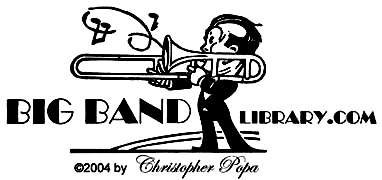
MAGAZINES:
THE BILLBOARD
summary by Christopher Popa
December 2005
One of the longest-running weekly publications, starting in 1894 and continuing to the present. As such, it documented both the rise and fall of the big bands.
For example, when bandleader Eddy Howard appeared on the July 24, 1943 cover [ l., top ], he was performing at the Aragon Ballroom in Chicago, broadcasting on WGN, a Mutual (MBS) affiliate in Chicago, and had signed with Columbia Records. His personal manager was W. Biggie Levin, and his booking agency affiliation was the Music Corporation of America. Howard's biggest successes were still ahead of him.
Yet, at the same time, singers were also being shown on covers, such as Bea Wain, best-known as vocalist with bandleader Larry Clinton, on the October 16, 1943 issue [ r., top ]. Wain had gone on to be a singing star on radio, including "Your All-Time Hit Parade," heard Fridays at 8:30pm on NBC, and "Hit Parade," which aired Saturdays at 9pm and was sponsored by Lucky Strike cigarettes. Her personal manager was Frank Cooper, and she was booked through the General Amusement Corporation.
Though today many of the same types of music news and information -- including features, popularity charts, and reviews of recordings -- are still included, big bands are rarely mentioned. For the last 20 or so years, it mostly occured only when one of the famous leaders died.
Some brief, but worthy coverage was given recently, in the January 15, 2005 issue, after Artie Shaw passed away. Besides a small photo of Shaw on the cover and an obituary by Bill Holland, a more personal tribute was written by Ray Conniff's daughter, Tamara, who is
co-Executive Editor of Billboard.
"What I hope most of all is that we never forget these greats," she commented. "It is our history, our heritage, our culture and our greatness."
send feedback about "Magazines:
The Billboard" via e-mail
go to the Big Band Library